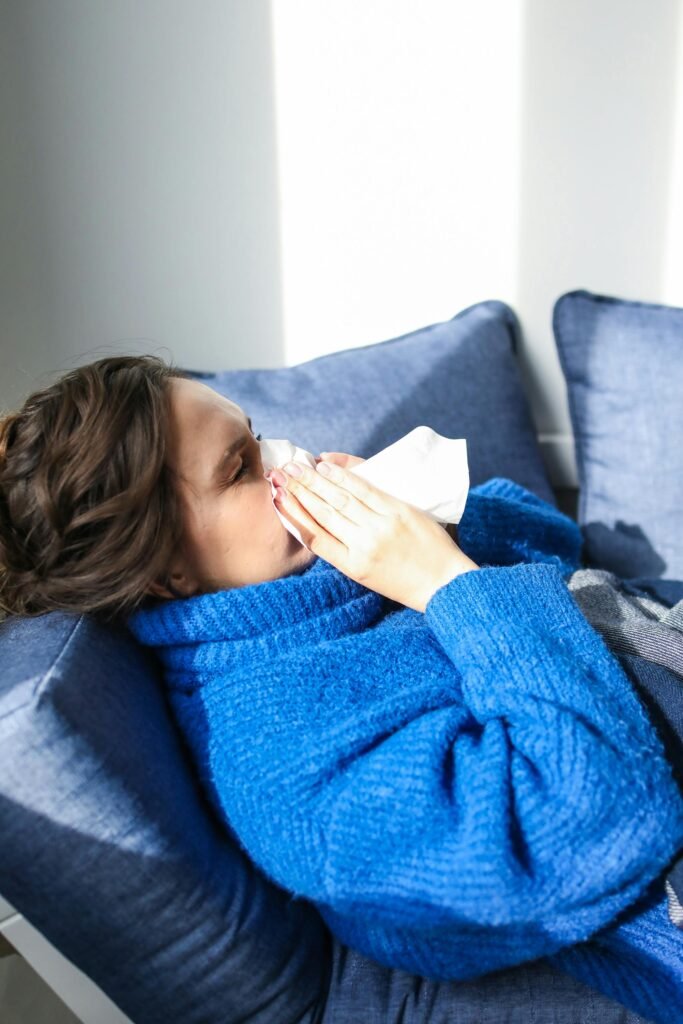Follow us and share.
Infectious Respiratory Diseases: Everything You Need to Know About the Flu, Pneumonia, and COVID-19
Learn about the most common infectious respiratory illnesses, such as the flu, pneumonia, and COVID-19. Learn how to prevent infection and protect your health with effective strategies.

The Importance of Knowing the Most Common Infectious Diseases
The infectious diseases affect millions of people each year and can spread rapidly in communities, especially at certain times of the year. Among the most common are flu, pneumonia, and COVID-19, which may present similar symptoms but have distinctive characteristics that require different prevention and treatment approaches.
In this article, we explore the main characteristics of these diseases, their symptoms, modes of transmission, and prevention strategies to avoid infections and complications.
1. Flu: A Seasonal Viral Infection
The flu or influenza It is a respiratory illness caused by influenza A and B viruses. It spreads easily from person to person through droplets expelled when coughing, sneezing or talking.
📌 Main symptoms:
- Fever and chills.
- Dry cough and nasal congestion.
- Muscle aches and fatigue.
- Sore throat and headache.
📌 Risk factors:
- Children under 5 years old and adults over 65.
- People with chronic illnesses such as diabetes or asthma.
- Pregnant women and immunosuppressed people.
📌 Prevention and treatment:
- Annual vaccination against the flu.
- Frequent hand hygiene and use of masks in seasons of high transmission.
- Use antivirals in severe cases and rest at home to prevent spread.
CDC – Information about influenza.
2. Pneumonia: A Respiratory Infection That Can Be Serious
The pneumonia It is a lung infection that can be caused by viruses, bacteria, or fungi. It is more serious in young children, older adults, and people with weakened immune systems.
📌 Main symptoms:
- Difficulty breathing and chest pain.
- Cough with yellow or greenish phlegm or discharge.
- High fever and intense sweating.
- Fatigue and general weakness.
📌 Risk factors:
- Smoking and exposure to environmental pollutants.
- Chronic respiratory diseases, such as COPD or asthma.
- Patients with heart disease or immunosuppression.
📌 Prevention and treatment:
- Pneumococcal vaccination and influenza to reduce the risk of bacterial pneumonia.
- Avoid smoking and maintain good respiratory hygiene.
- In bacterial cases, use of antibiotics under medical prescription.
WHO – Guide to pneumonia.
3. COVID-19: A Pandemic That Is Still Present
He COVID-19, caused by the SARS-CoV-2 virus, has changed the way we understand infectious diseases. Although preventive measures have reduced its impact, it remains a disease that requires attention.
📌 Main symptoms:
- Fever, persistent cough, and difficulty breathing.
- Loss of taste or smell.
- Extreme fatigue and muscle aches.
- Gastrointestinal symptoms in some cases.
📌 Risk factors:
- People over 60 years of age and people with chronic illnesses.
- Unvaccinated people or people with weakened immune systems.
- Exposure in closed places with poor ventilation.
📌 Prevention and treatment:
- Complete vaccination and periodic boosters.
- Use of masks in places with high transmission.
- Maintain good ventilation in closed spaces.
WHO – Information on COVID-19 and new variants.
General Measures to Prevent Infectious Diseases
Regardless of the type of infectious disease, there are general prevention measures that help reduce the risk of contagion:
📌 Hygiene and essential care:
- Wash your hands with soap and water for at least 20 seconds.
- Avoid close contact with sick people.
- Cover your mouth and nose with your elbow when coughing or sneezing.
- Maintain healthy habits such as a balanced diet and regular exercise.
📌 Importance of vaccination: The vaccines have been key in reducing the mortality and severity of many infectious diseases. Keeping your vaccination schedule up to date is one of the most effective strategies for protection.
PAHO – Information on vaccination programs.
Conclusion: Prevention is the Best Tool
The infectious respiratory diseases, such as influenza, pneumonia, and COVID-19, can have a major impact on public health, especially among vulnerable groups. However, with proper information and the application of preventive measures, it is possible to significantly reduce infections and complications.
🌟 Advice: Don't underestimate the symptoms of respiratory infections. Consult a doctor if you experience persistent fever, difficulty breathing, or extreme fatigue. Early detection and appropriate treatment can make all the difference.
Complete Guide to the Flu: Treatment and Prevention to Protect Yourself This Winter



